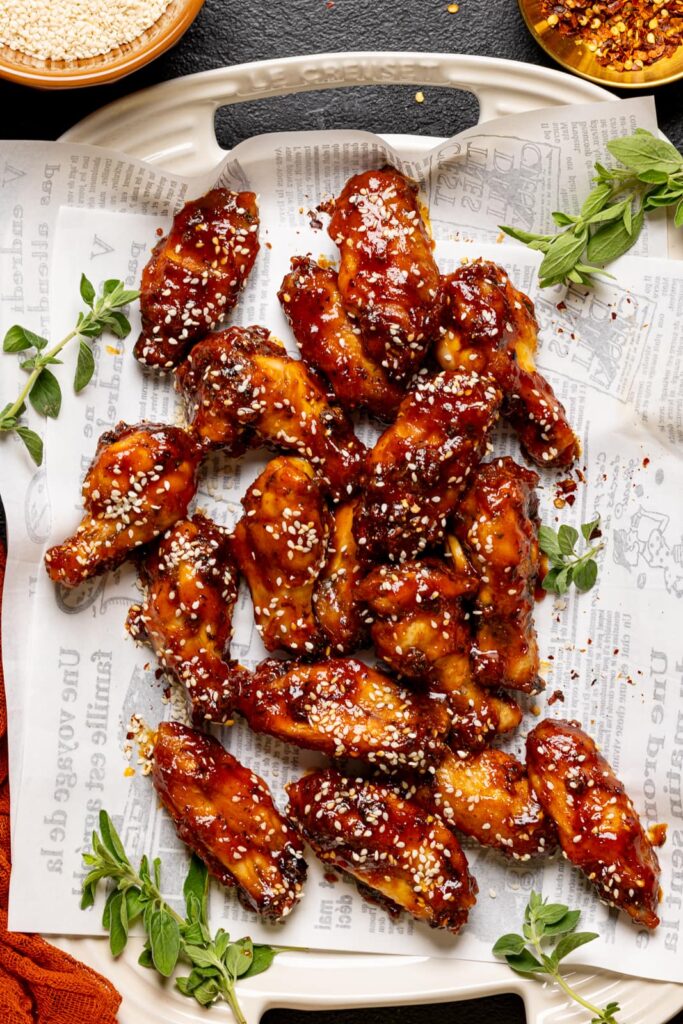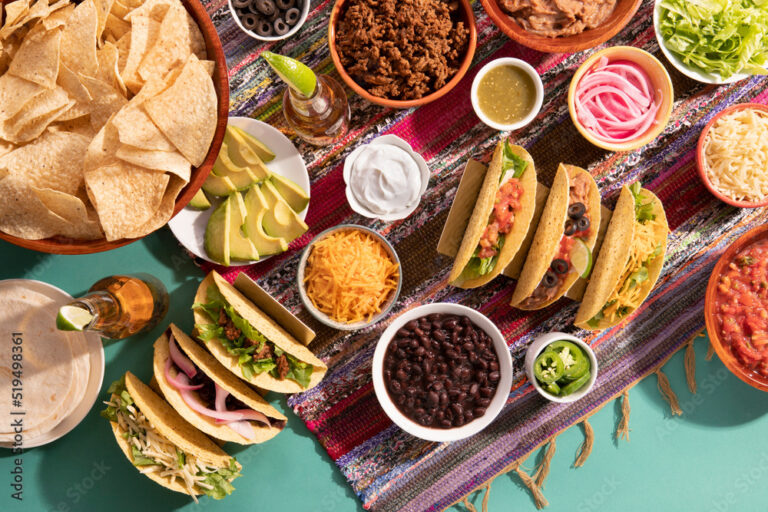Chicken wings have become a beloved staple in American cuisine, especially during sports events and gatherings. Their versatility, ease of preparation, and endless flavor possibilities make them a favorite for many. This guide to Chicken Wings dives into the rich history, nutritional benefits, and cultural significance of chicken wings, offering everything you need to know to enjoy this delicious dish to the fullest.

History and Popularity of Chicken Wings
Origin of Chicken Wings
The story of chicken wings as we know them today begins in Buffalo, New York. In 1964, Teressa Bellissimo, owner of the Anchor Bar, created the iconic Buffalo wing. According to legend, Teressa needed a quick and easy snack for her son and his friends. She deep-fried some chicken wings, typically discarded or used for stock, and tossed them in a tangy hot sauce. The result was an instant hit, and the Buffalo wing was born.
Chicken wings have been part of various cuisines worldwide for centuries, but their transformation into a popular bar snack in the United States marked a significant turning point. Before their rise to fame, wings were considered a less desirable part of the chicken, often reserved for making broth or stock. The creative repurposing of this cut of meat highlighted a broader culinary trend of finding value in underutilized ingredients.

Rise in Popularity
Buffalo wings quickly gained popularity beyond the Anchor Bar. By the 1980s, the dish had become a national sensation, featured on menus across the United States. The versatility of chicken wings, allowing for various sauces and cooking methods, contributed to their widespread appeal. From mild to spicy, sweet to tangy, chicken wings could be adapted to suit any palate.
The rise of sports bars and casual dining establishments in the 1980s and 1990s further fueled the popularity of chicken wings. These venues capitalized on the communal and shareable nature of wings, making them a perfect match for social settings. Restaurants and fast-food chains soon introduced their own variations, leading to a proliferation of wing flavors and styles.
Chicken Wings in Sports Culture

Chicken wings are synonymous with sports culture. They have become a quintessential part of game day fare, particularly in American football. Super Bowl Sunday, in particular, sees a massive consumption of chicken wings. The National Chicken Council estimates that Americans eat over 1.4 billion wings during the Super Bowl weekend alone. The combination of easy-to-eat finger food and bold flavors makes wings the perfect accompaniment to cheering on your favorite team.
The tradition of enjoying chicken wings during sports events has grown beyond the United States. International sporting events like the FIFA World Cup and the Olympics also see a surge in wing consumption. The portability and mess-free nature of wings make them an ideal snack for fans who want to keep their eyes on the game without the distraction of complicated food.
Health Benefits and Nutritional Information

Nutritional Breakdown
Understanding the nutritional content of chicken wings can help you make informed choices about your diet. A standard serving of chicken wings (about 4.4 ounces or 100 grams) contains:
- Calories: 203
- Protein: 30.5 grams
- Fat: 8.1 grams
- Carbohydrates: 0 grams
- Sodium: 99 milligrams
While chicken wings can be high in calories and fat, they also provide a good amount of protein and essential nutrients.
It’s important to note that the nutritional content of chicken wings can vary significantly based on the cooking method and sauce used. Deep-frying and rich, sugary sauces can increase the calorie and fat content, while baking or grilling with light seasonings can make for a healthier option.
Health Benefits
Despite their reputation as a guilty pleasure, chicken wings do offer several health benefits when consumed in moderation and prepared in a healthy manner.
- Protein Content Chicken wings are an excellent source of protein, which is essential for muscle repair, growth, and overall bodily function. High-protein diets can also aid in weight management by promoting satiety and reducing overall calorie intake. The amino acids in chicken wings help repair muscle tissue and maintain a healthy immune system.
- Healthy Fats The fats found in chicken wings, particularly when baked or grilled rather than fried, can be part of a balanced diet. Monounsaturated and polyunsaturated fats, found in chicken skin and meat, help maintain healthy cholesterol levels and support heart health. Additionally, these fats are crucial for absorbing fat-soluble vitamins such as A, D, E, and K.
Moderate consumption of healthy fats can also provide long-lasting energy and improve overall brain function. These fats are necessary for the production of hormones and the maintenance of cell membranes.

Cooking Techniques and Flavor Variations
Classic Buffalo Wings
The traditional Buffalo wing is deep-fried and coated in a sauce made from hot sauce and melted butter. This simple yet flavorful combination has remained a favorite for decades. The tangy, spicy sauce is balanced by the rich, creamy butter, creating a perfect harmony of flavors.

To make classic Buffalo wings at home, start by patting the wings dry to ensure they crisp up nicely. Deep-fry them in oil heated to 375°F until golden brown, about 10-12 minutes. Toss the hot wings in a mixture of equal parts hot sauce and melted butter. Serve immediately with celery sticks and blue cheese dressing.
Baked Chicken Wings
For a healthier alternative, baking chicken wings is an excellent option. Baking reduces the fat content while still achieving a crispy texture. Tossing the wings in a bit of oil and seasoning before baking ensures they remain flavorful.

To bake chicken wings, preheat your oven to 400°F. Line a baking sheet with parchment paper and arrange the wings in a single layer. Bake for 45-50 minutes, flipping halfway through, until the wings are crispy and cooked through. For added flavor, toss the wings in your favorite sauce or seasoning blend before serving.
Grilled Chicken Wings
Grilling adds a smoky flavor to chicken wings and is another healthy cooking method. Marinate the wings in your favorite sauce or seasoning, then grill them over medium-high heat until cooked through and crispy.
To grill chicken wings, preheat your grill to medium-high heat. Place the wings on the grill and cook for about 20-25 minutes, turning occasionally, until they reach an internal temperature of 165°F. Basting the wings with additional sauce during the grilling process enhances their flavor.

Sauces and Seasonings
One of the most appealing aspects of chicken wings is their versatility in flavor. Here are a few popular variations:
- Barbecue Wings: Coated in a sweet and tangy barbecue sauce, these wings are a crowd-pleaser.
- Teriyaki Wings: Marinated in a savory-sweet teriyaki sauce, these wings offer an Asian-inspired twist.
- Garlic Parmesan Wings: Tossed in a buttery garlic sauce and sprinkled with Parmesan cheese, these wings are rich and indulgent.
- Honey Mustard Wings: Coated in a blend of honey and mustard, these wings are both sweet and tangy.
- Lemon Pepper Wings: Seasoned with lemon zest and cracked black pepper, these wings are zesty and aromatic.
- Cajun Wings: Spiced with a blend of Cajun seasonings, these wings pack a flavorful punch.

Experimenting with different sauces and seasonings allows you to customize your chicken wings to suit any taste preference. From classic flavors to creative combinations, the possibilities are endless.
Pairing Chicken Wings with Sides and Beverages
Perfect Side Dishes
The right side dishes can elevate your chicken wing experience. Here are a few popular options:
- Celery and Carrot Sticks: Classic accompaniments that provide a refreshing crunch.
- Blue Cheese or Ranch Dressing: Ideal for dipping and adding extra flavor.
- Potato Wedges: Crispy and seasoned, they complement the juicy wings perfectly.
- Coleslaw: A tangy and creamy side that balances the spice of the wings.
- Macaroni and Cheese: A creamy, cheesy dish that pairs well with the bold flavors of chicken wings.
- Cornbread: Sweet and savory, cornbread is a comforting side that complements the spiciness of wings.
- Baked Beans: Rich and smoky, baked beans add a hearty element to your meal.

Beverage Pairings
Choosing the right beverage can enhance the flavors of your chicken wings. Consider these options:
- Beer: The carbonation and bitterness of beer balance the richness of the wings. Light lagers and pale ales are popular choices.
- Soda: Sweet and fizzy sodas can cut through the spiciness. Classic cola or lemon-lime soda are refreshing options.
- Lemonade: A refreshing and tangy drink that pairs well with bold flavors. Homemade lemonade with a hint of mint can be particularly refreshing.
- Iced Tea: Sweet or unsweetened, iced tea is a versatile beverage that complements various wing flavors.
- Wine: For a more sophisticated pairing, try a crisp white wine like Sauvignon Blanc or a fruity red like Zinfandel.

Frequently Asked Questions
Conclusion
Chicken wings have evolved from a humble bar snack to a cultural icon, beloved for their versatility and bold flavors. Whether you’re enjoying them during a sports event or as a tasty appetizer, understanding their history, nutritional benefits, and various cooking methods can enhance your appreciation for this classic dish. So, gather your ingredients, experiment with different sauces, and savor the ultimate chicken wing experience.
Disclosure: Our blog contains affiliate links to products. We may receive a commission for purchases made through these links. However, this does not impact our reviews and comparisons. We try our best to keep things fair and balanced, in order to help you make the best choice for you.







